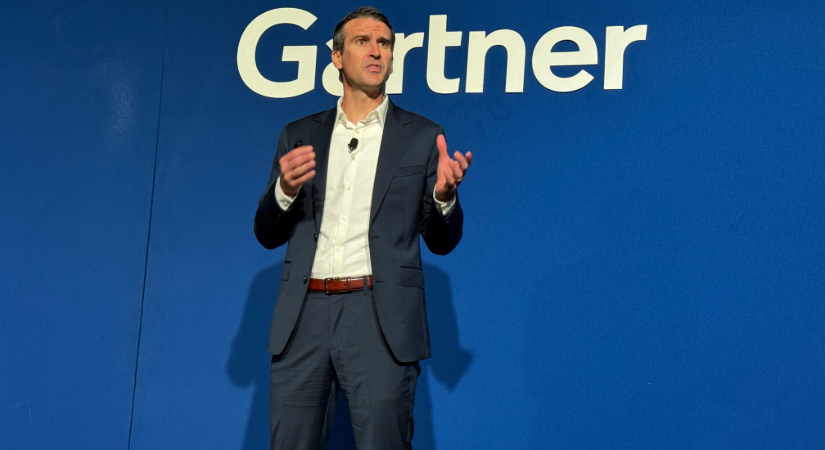Working toward a net zero future: How technology paves the way to ESG reporting
- Inno-Thought Team

- Jan 17, 2023
- 4 min read
By Cally Chan, MH, General Manager of Microsoft Hong Kong and Macau
The original article was published on Microsoft Hong Kong website in November 2022

Sustainability is one of the future tech trends we envision to be Top of CEO’s mind. As a part of the transformation to green economy, financial regulators globally have been engaging with stakeholders better to understand the challenges of the ESG reporting framework.
Understand the ESG regulatory landscape in Hong Kong
At COP26, the IFRS Foundation announced the creation of the International Sustainability Standards Board (ISSB), whose mandate is the development of a high-quality, comprehensive global baseline of sustainability disclosures to meet investors’ needs for sustainability reporting. The ISSB is seeking feedback on the proposals in the second half of 2022 and aims to produce the first set of international sustainability standards in late 2022 or early 2023.
In Hong Kong, the Securities and Futures Commission and the Hong Kong Exchanges and Clearing Limited also prioritize evaluating the implementation of ISSB standards to Hong Kong listing rules for listed companies in Hong Kong.
With proposed standards (IFRS S1 & IFRS S2) which focused on requiring sustainability disclosures that meet the information needs of investors, listed companies in Hong Kong are now facing challenges in recording accurate data, and effective reporting that meets the requirement of the regulatory body. They also found difficulties in getting actionable insight based on the data that can reduce environmental impact.
In June 2022, we launched the Cloud for Sustainability in Hong Kong to cater to customer needs on ESG reporting. The Software-as-a-Service solution empowers our customers to embrace sustainability through unified data and automation, enabling organizations to record ESG data effectively, report that aligns to international or local standards and reduce environmental impact with the power of the cloud.
Enhance ESG governance with cloud
One of the areas to enhance ESG governance is transiting your data into cloud for automation. Microsoft is actively working toward sustainability targets and empowers every organization to help reduce emissions and improve our environmental health. By transiting your ESG reporting framework to Cloud, you may:
Record & Report by developing auditable carbon accounting and reporting capabilities for a full stack view of emissions data, emission reports, targets for reduction, and list of data that meet listing rules or compliance expectations;
Reduce by setting goals and take action with a list of actionable insight to reduce carbon emissions, and;
Standardize by building a standardized data model for specific organizations that fits into the local market’s reporting standard.
In real life, the COO or CIO in the organization will be able to align and centralize all data from various departments using a common data model so that it’s easier to calculate, understand and report. They will then be able to share those data to the department such as finance department for ESG report preparation. The department that handles the data will then obtain a detailed report in a full stack view that they are able to generate a list of calculation-free data with analysis. Then the organization can use the data to set their emission goals as required in the ESG reporting guideline and to track the progress against their emission target from time to time. In the dashboard with centralized data and analysis, they can also receive comparative insights and suggestions based on industry and local regulatory recommendations.
Lower your carbon footprint with industrial metaverse
In additional to putting the whole ESG reporting mechanism to cloud, applying industrial metaverse can also help to reduce your carbon footprint.
Industrial metaverse is all about connecting the physical and digital world to drive the industry forward. It combines IoT devices, digital twins and mixed reality technologies to innovate enterprises’ business operations. With Microsoft’s Industrial Metaverse, traditional manufacturing industry can gain visibility and insights into factory floors everywhere at a moment’s notice, and capture actionable data into the cloud to make the production process more effective, which translates to a lower carbon footprint. For example, Hellenic – one of the largest bottlers in the Coca Cola ecosystem – saved over 9% in energy cost in a 12-week period by building out a sensor fabric, creating digital twins and allowing factory workers to become immersed with the twins. You may also simulate the production in the cloud before you make it or before you move it, with lower carbon footprint, lower water utilization, and more sustainably.
Deploying technology is key to sustainable future
Sustainability reporting has become an important part of annual reports to listed companies in Hong Kong. As a result, the burden of proof and traceability is becoming a fundamental requirement, and the journey to sustainable transformation is one we must take together. As organizations of all sizes re-evaluate strategy, it’s clear that deploying technology is key to ensure we do so in a measurable and sustainable way. Many organizations across Asia are already using innovative technologies to achieve more sustainable ways of working and reshaping the benefits of their endeavours. With Microsoft’s technology, I hope we will inspire business leaders in Hong Kong to take action toward realizing a more sustainable and prosperous tomorrow.













































Comments